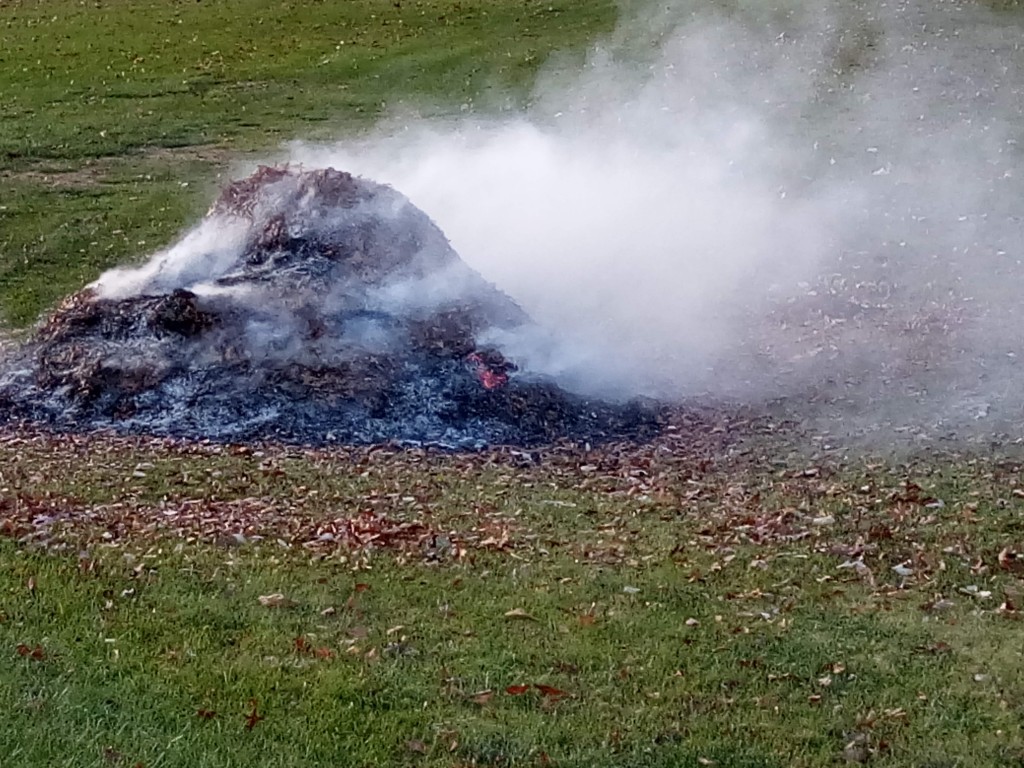I’m running behind in my fall garden projects including taking care of the fallen leaves all over my lawn. Maybe it just feels like I’m behind because of the snow we’ve been having recently.
This past weekend while driving back from up north, I spotted several people catching up on their fall tree leaf clean up. They were easy to spot because of the plumes of smoke rising up from their lawns and ditches. By the way, this was happening out in the countryside where leaf burning is still fairly common.
I enjoy the smell of burning leaves as much as the next guy. When I smell leaf smoke, it reminds me of my childhood when nearly everyone in the neighborhood burned their leaves. It actually was a pretty good tactic to get the kids out of the house. As a matter of fact, the neighborhood kids looked forward to raking the lawn because of the fire afterward.
Of course nowadays most communities have ordinances restricting leaf burning. And Michigan has a state law regulating open burning of leaves so we don’t see or smell much of it anymore.
As much as I enjoy it, as a gardener I wouldn’t burn leaves even if it were allowed. They are just too valuable as a soil amendment to let them just go up in smoke.
I you think about it for a bit, trees have huge root systems that absorb soil minerals from a deep and wide area, nutrients that may not be available to other kinds of plants. Those soil nutrients, along with carbon from the atmosphere, are used by trees to make their leaves. That’s a lot of plant nutrients that trees make for us when you consider the shear volume of leaves each tree produces every year.
The mineral components of the leaves quite are valuable, providing much more fertilizer value than manure. Even more valuable than the mineral elements are the carbon compounds that make up the bulk of a leaf. When leaves break down in the soil they provide humus, that magical ingredient that experienced gardeners know is the secrete to a flourishing garden.
I remember several years ago a friend of mine used to pick up bagged up leaves from the curbside in the city and take them home to use because she didn’t have access to enough leaves. One day just as my friend was about to depart with a van full of bagged leaves, the homeowner came running out of the house shaking her fist and yelling, “put those leaves back!” The funny thing is those leaves were about to be picked up by the trash collectors and taken to the landfill.
The biggest drawback to leaves is their tendency to blow around and not stay put where they are needed. That can easily be taken care of by cutting them up into smaller pieces. I use a leaf vac with a collection bag to shred and collect most of my leaves. Some of the heavier and tougher leaves like cottonwood, I run over with a lawn mower first to make them easier to vacuum up. Then they either go right into the garden as a mulch or into to the compost pile if there are any left over.
Instead of looking at leaves as trash that needs to be bagged up and hauled away, I like to consider them free soil builders provided by mother nature every year. In case you were wondering, my friend did manage to escape with her misbegotten load of contraband.
Bob
